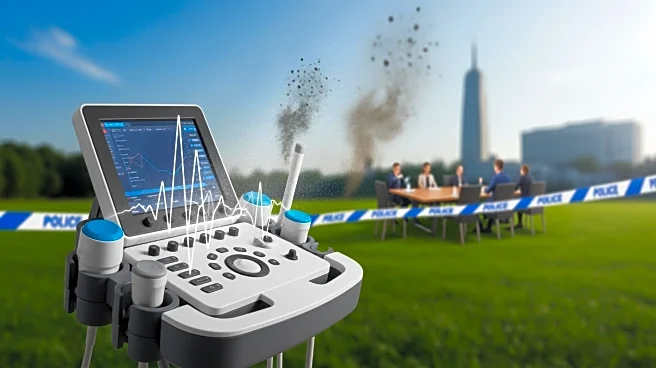What's Happening?
Ultrasonic technology is gaining attention as a sustainable method for environmental remediation, addressing pollution in water, air, and soil. This technology uses ultrasonic waves to induce cavitation, which enhances the degradation of pollutants without
the need for chemicals, thus reducing secondary pollution. The review highlights the effectiveness of ultrasonic treatment in degrading specific organic pollutants in wastewater and its potential for large-scale deployment. Challenges remain in optimizing operational parameters and improving energy transfer efficiency, but the technology holds promise for sustainable development.
Why It's Important?
The broader significance of ultrasonic technology lies in its potential to revolutionize environmental remediation by offering a green alternative to traditional methods. As environmental pollution continues to pose a threat to ecosystems and human health, ultrasonic technology could provide a cost-effective and efficient solution. Its ability to degrade pollutants without chemicals aligns with global sustainability goals, potentially reducing the environmental footprint of industrial processes. This could lead to significant advancements in public health and environmental protection, benefiting industries and communities by providing cleaner air and water.
What's Next?
Future developments in ultrasonic technology will likely focus on overcoming current challenges, such as optimizing reaction conditions and improving energy efficiency. Research will continue to explore the integration of ultrasonic treatment with other remediation technologies to enhance its effectiveness. Additionally, efforts will be made to scale up the technology for broader applications, which will require addressing economic and technical barriers. The potential for interdisciplinary collaboration and international partnerships could accelerate the adoption of ultrasonic technology in environmental remediation.
Beyond the Headlines
The adoption of ultrasonic technology could lead to long-term shifts in environmental policy and industrial practices. By providing a sustainable solution for pollution control, this technology could influence regulatory frameworks and encourage industries to adopt greener practices. The ethical implications of reducing chemical use in remediation processes could align with global efforts towards environmental sustainability and conservation, promoting a more sustainable future.














